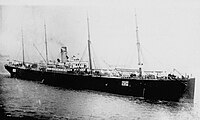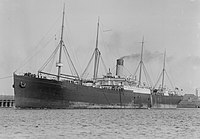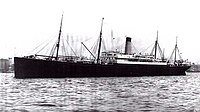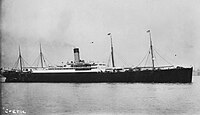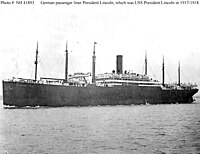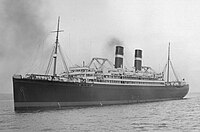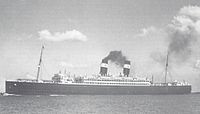
Cunard Line is a British shipping and cruise line based at Carnival House at Southampton, England, operated by Carnival UK and owned by Carnival Corporation & plc. Since 2011, Cunard and its four ships have been registered in Hamilton, Bermuda.

Jun'yō Maru (順陽丸) was a cargo steamship that was built in Scotland in 1913, served a succession of British owners until 1927, and was then in Japanese ownership until a Royal Navy submarine sank her in 1944.

The International Mercantile Marine Company, originally the International Navigation Company, was a trust formed in the early twentieth century as an attempt by J.P. Morgan to monopolize the shipping trade.
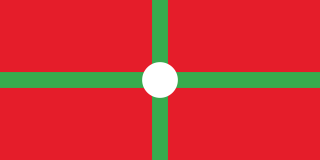
Ellerman Lines was a UK cargo and passenger shipping company that operated from the late nineteenth century and into the twentieth century. It was founded in the late 19th century, and continued to expand by acquiring smaller shipping lines until it became one of the largest shipping firms in the World. Setbacks occurred through heavy losses to its merchant fleet in the First and Second World Wars but were overcome in each case.

Frederick Richards Leyland was one of the largest British shipowners, running 25 steamships in the transatlantic trade. He was also a major art collector, who commissioned works from several of the Pre-Raphaelite Brotherhood painters.

Furness Withy was a major British transport business. It was listed on the London Stock Exchange.

The Bridge-class was a series of six ore-bulk-oil vessels completed by Swan Hunter at their shipyard on the River Tees between 1971 and 1976. The vessels were built for four different shipowners, for operation by the Seabridge consortium, hence their "Bridge" names.

USS Maartensdijk was a cargo steamship that was laid down in England in 1902 as Egyptiana, but launched as Rapallo. She served in the United States Navy as USS Maartensdijk from 1918 until 1919, with the Naval Registry Identification Number ID-2497.

SS Lapland was a steam ocean liner built in Ireland for the Belgian Red Star Line, as Red Star's flagship, similar in appearance to the fellow liners SS Samland, SS Gothland and SS Poland, but far larger. She was a half sister to White Star Line's "Big Four." They were similar in many ways, such as the island bridge, 4 masts, 2 funnels. But Lapland had a less luxurious interior.

SS Polar Chief was a merchant steamship that was built in England in 1897 and scrapped in Scotland in 1952. In her 55-year career she had previously been called Montcalm, RFA Crenella, Crenella, Rey Alfonso, Anglo-Norse and Empire Chief. Early in the First World War she spent eight months pretending to be the battleship HMS Audacious.

Harrison Line, officially T&J Harrison, was a shipping line founded by the brothers Thomas and James Harrison in Liverpool, England in 1853. It ran both cargo and passenger services, starting with the import of French brandy from Charente.

Houlder Line was a number of related British shipping companies originally established by the Houlder brothers.
SS Hatarana was a cargo steamship that was built as part of an emergency shipbuilding programme during the First World War, and sunk without loss of life in the Battle of the Atlantic during the Second World War. She was built as War Sailor, one of a batch of cargo ships that the United Kingdom ordered from Japanese shipyards. She was renamed Hatarana in 1919 when she changed owners.
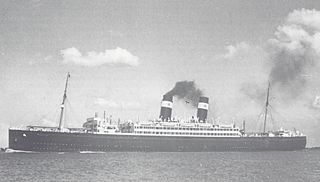
SS Pennland was a transatlantic ocean liner that was launched as Pittsburgh in Ireland in 1920 and renamed Pennland in 1926. She had a succession of UK, German and Dutch owners and operators. In 1940 she was converted into a troopship.

SS Westernland was a transatlantic ocean liner that was launched as Regina in Scotland in 1917, renamed Westernland in 1929 and was scrapped in 1947. She began her career as a troop ship repatriating US troops after the Armistice of 11 November 1918. In the Second World War, Westernland served as a troop ship, repair ship and destroyer depot ship.

Furness Bermuda Line was a UK shipping line that operated in the 20th century. It was part of Furness, Withy and ran passenger liners between New York and the British Overseas Territory of Bermuda from 1919 to 1966.
SS Benlomond was a British cargo steamship that was built in 1922 as Cynthiana, changed owners and names a number of times, and was sunk by a U-boat in 1942, with the loss of all but one of her 53 ship's company. The sole survivor, Poon Lim, drifted on a raft for 133 days before being rescued.
SS Sagamore was a transatlantic cargo liner that was built in Ireland in 1892 for George Warren's White Diamond Steam Ship Company. In 1913 she was modified to carry passengers as well as cargo. In 1917 a German U-boat sank her, causing the death of 52 members of her crew.

SS Teiryu Maru was a steam cargo ship that was launched in England in 1914 as Northwestern Miller. Furness, Withy & Co managed her until 1927, when Norddeutscher Lloyd bought her and renamed her Augsburg.


